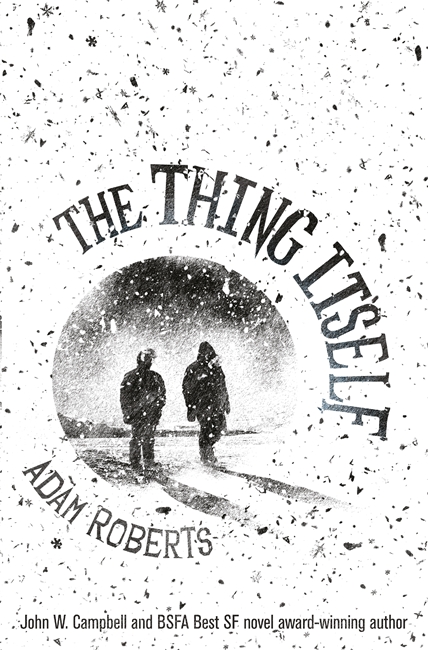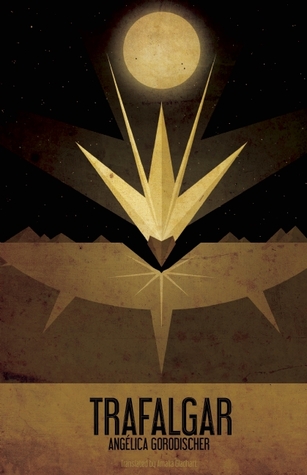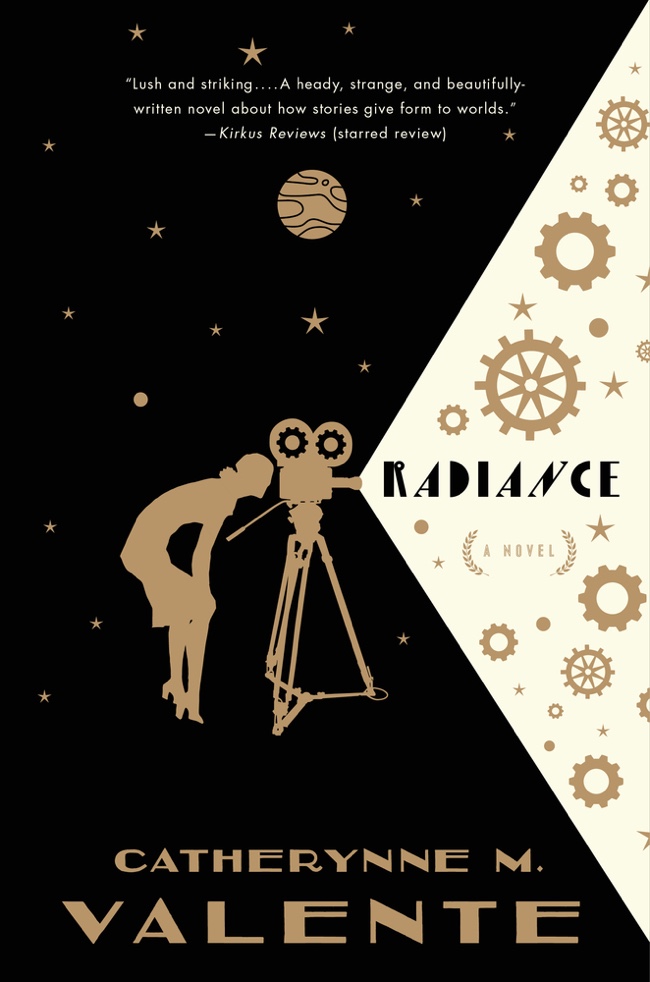1.
We think of spoilers as a recent concern. That’s not necessarily the case. Witness the preface to Adolfo Bioy Casares’s The Invention of Morel. None other than Jorge Luis Borges explains why he wants readers to discover the novella’s plot for themselves: “To classify it as perfect,” says Borges, “is neither an imprecision nor a hyperbole.” Spoilers aren’t the only concept this book anticipates. Morel, first published in 1940 (though not translated until 1964) plays with ideas science fiction wouldn’t pick up on for decades: transhumanism, virtual reality, audiences’ relationships with media. To explain, I’ll have to reveal everything. Sorry, Jorge!
Seriously, though, maybe you should read this book before reading my reaction. That feeling of discovery is one of the best things about it.
2.
The Invention of Morel is efficient, packing a novel’s worth of ideas into 100 pages. The first line is already laying clues to what’s coming: “Today, on the island, a miracle happened: summer came ahead of time.” Morel’s nameless and disreputable narrator is a fugitive. He’s fled to a deserted island with a hotel (called, for reasons he doesn’t yet understand, a “museum”) and a lot of diseased trees. He insists he’s wrongly accused–of what, he refuses to say. Footnotes from a puzzled editor suggest we shouldn’t entirely trust him. Among other things, the narrator is obsessed with Thomas Malthus’s ideas on overpopulation. You get the sense that, for all his intellectual pretensions, he just doesn’t like people much and wishes there weren’t so many.
Rumor has it the island’s last visitors died of plague. Still, as the story opens our antihero is hiding from a sudden materialization of tourists. As sometimes happens in old novels the narrator falls in Love at First Sight with a vacationer named Faustine. As does not happen often enough in old novels, it occurs to him a strange man popping out of the wilderness to declare undying love may disconcert the object of his affection. He starts a garden to attract her attention. When she seems to ignore him he doesn’t immediately approach. So it takes a while to dawn on the narrator that she can’t see or hear him at all.
The tourists are simulations. The island runs on hydroelectric engines. When they’re working a week-long recording of the tourists runs in loops. These aren’t images, they’re physical. So are recordings of the museum, the trees, and even the weather. (Summer came early when recorded sunshine superimposed itself on reality.) Somebody’s invented a holodeck, like on Star Trek: The Next Generation.
That somebody is Morel, the mad scientist whose island and whose party this is. His guests are all friends, but as the loops repeat it becomes clear Morel just invited them as a pretext to get close to Faustine. A few iterations later the narrator is in the right place at the right time to watch Morel calmly explain to his friends how he murdered them.
Morel has invented a new kind of camera. Like film, it records and plays back images. Like a gramophone, it records and plays back sound. Unlike either, it records and plays back everything else–temperature, odor, physical matter. In fact, insists Morel, his invention records everything so exactly it captures thoughts. The recordings played back by the invention of Morel are conscious, but it’s consciousness without free will or memory. Morel and his friends can’t think new thoughts. With each playback they relive the same thoughts and experiences, as though for the first time. But they are real experiences. A pity that the process destroys any living thing it records! Trees or people, all waste away as though diseased. Morel has, nonetheless, spent the last week recording himself and his closest friends. They’ll die, but Morel’s invention guarantees him an afterlife eternally reliving a perfect vacation with his friends. Especially Faustine, whether she likes it or not.
Morel is scary. He’s a mild, unspectacular character. But he’s mildly and unspectacularly an utter sociopath. I thought Dr. Moreau was bad but, as island-owning mad scientists whose names start with “More” go, Morel has him beat.
He’s also a transhumanist uploading his brain into a personal Matrix, which is impressive for 1940.
3.
Early in 2018 the internet paused to gawk at a startup company called Nectome. Nectome offers to record your mind. They’ll store your consciousness–at least, if you believe the optimistic view. Someday, maybe, someone will be both able and willing to run it in a computer, granting you new life as an artificial intelligence in a simulated world. The catch is that Nectome stores, like, your brain. As a cofounder quoted in the MIT Technology Review puts it:
The product is “100 percent fatal,” says McIntyre. “That is why we are uniquely situated among the Y Combinator companies.”
(A line that cries out to be followed up with “Beep Boop. I am a robot.”)
Fatal or not, mind uploading is a popular idea in science fiction and among Transhumanists. Morel sees no problem in trading lives for digital afterlives, though Morel’s simulation runs in the real world instead of on a computer. The narrator considers the implications: what if there’s a way to find and gather “vibrations” long since dispersed? Everyone who ever existed could return to replay their lives. The narrator imagines simulated afterlives crowding out living humans. (At this point the weary editor claims to have removed a long, incoherent rant on Malthus.)
This is basically physicist Frank Tipler’s Omega Point. Tipler imagines a future society with near-infinite computational resources simulating every possible universe containing everyone who ever lived. Less cosmically, yet even less convincingly, some think we could recreate people by combining conscious software with biographical and psychological profiles. To be fair to Tipler and friends, at least they’re imagining an afterlife for everybody. When transhumanists talk about “life extension,” I often get the sense they’re really talking about “life extension for me, the silicon valley billionaire!” without caring how accessible those extended lives will be to the rest of us peons.
4.
This raises questions. Obvious questions, asked many times, without dampening transhumanist interest in mind uploading at all.
-
Assuming you can copy your mind onto a hard drive, and it’s conscious, is it really you? Is there continuity between you and the you in the computer? Most people (myself included) would say no. You’ve created a parallel version of yourself, a mental twin whose identity immediately diverges from yours. Although from the twin’s point of view it may feel like you. It has all your memories up to the point of upload, and if you had your brain freeze-dried the original you isn’t hanging around to raise awkward questions. Maybe for some people that’s close enough.
-
Maybe it’s okay your upload is someone else–maybe you just want to leave behind a digitally conscious offspring. The next question: Is it conscious? I’m assuming you made the decision after some due diligence. Presumably whoever sold you on the process let you talk to an AI who assured you everything was great. But were you talking to a conscious mind, or an extraordinarily sophisticated Eliza? Not being inside a computer yourself, how can you be sure?
-
What kind of afterlife is this? Do you have an interface to the real world? Can a computer run more than one mind? Can you network with those other minds? If you’re one of the first uploads, will you be spending decades by yourself in a low-polygon-count video game?
These are questions The Invention of Morel doesn’t ask, except implicitly: the narrator doesn’t ask, but we’re not meant to trust his judgement. The nature of uploading in Morel makes these questions especially important. The recordings can’t do or think anything new. But they’re (at least theoretically) conscious within those limits. And they don’t know they’re limited: each run feels like it’s happening for the first time.
If they can’t think new thoughts, are they alive? If they don’t know it, from their own point of view does it matter? Morel doesn’t stop to ask. What kind of person would take this deal?
5.
In Morel’s case, the answer is obvious. He’s a type of sociopath we’re all too familiar with, fueled by toxic masculinity and a bloated sense of entitlement. Other people are supporting characters in the movie of his life. If Faustine won’t play the role he’s laid out for her he’ll cancel production. Morel sacrifices his whole cast to replace uncooperative reality with a perfect eternal image.
There have been a lot of debates over the years about how media influence audiences, for good or bad. I’m increasingly convinced the most pernicious influences in popular culture are stories that value protagonists’ self-actualization, emotional fulfillment, or personal goals over the supporting cast’s safety or emotional health. I’m thinking, for instance, of all the action movies where the plot puts the lives of innumerable extras at stake but the emotional through-line is about nothing more than the hero’s conflict with a father-figure.
Our culture needs more heroes who care about other people’s self-actualization and fulfillment.
6.
What’s more interesting is the fate of the narrator. He never knew these people. They no longer exist in his world. They’re characters in a television series or a giant video game. It’s media–a documentary, but it might as well be fiction for all the narrator can affect anything. Still, he turns on Morel’s invention and records himself walking among the tourists. He inserts himself into their conversations, choreographs his actions so they seem to interact. An outside observer would never know he wasn’t part of the original group. The narrator will waste away; his copy will spend eternity pretending to have friends.
At this point it’s worth noting Bioy Casares based Faustine on the actress Louise Brooks–that’s her on the cover of the NYRB Classics edition of the novel. As a young man Bioy Casares had a crush on Brooks. The Invention of Morel is in part dissecting his adolescent self’s attraction to a woman he knew he’d never meet.
What Bioy Casares felt for Brooks is an example of a parasocial relationship. That’s the technical term for the one-sided relationship people have with fictional characters who feels like “old friends.” People can have parasocial relationships with media figures or celebrities, too. But as with explicitly fictional characters they’re only mental simulations of those people. A real relationship goes two ways; both sides engage with the other person’s point of view. In a parasocial relationship the feelings are all on one side. The second party isn’t aware of the first, and can’t be. The second party is fictional.
A horror movie’s audience feels fear they know is nothing like real fear. A tragedy’s audience feels sadness distinct from the sadness they feel when sad things happen in real life. Parasocial relationships are like that, with friendship; they’re not necessarily unhealthy. The devoted fans who check in with their favorite TV show every week have feelings analogous to the emotions associated with real friendships while understanding they aren’t the same.
If they’re healthy. If not, you get the proverbial soap opera fan accosting the villain’s actor on the street. Or a celebrity stalker. Or Reg Barclay, the character on Star Trek: The Next Generation who got so lost in his holodeck sessions he couldn’t deal with reality. Or the narrator, who has the same problem, except Counselor Troi isn’t around to stage an intervention.
The narrator can’t deal with people. I don’t mean he’s an introvert, drained by social interaction. That, I could sympathize with–no one’s more introverted than me! No, the narrator can’t deal with people because he’s a self-absorbed misanthrope. Instead, he’ll spend time with phantoms who can’t surprise him because they’re completely predictable, and ask nothing of him because they don’t know he’s there. For him, that’s close enough.
7.
In the social media age it’s become common for creators (they’re usually women) to get death threats when some cartoon or video game or movie franchise takes a turn its “fans” don’t like. As far as these guys (they’re always men) are concerned, their parasocial relationships with fictional characters are more important than real people’s emotional health and feelings of safety.
I sometimes wonder how many people have, without admitting it to themselves, on some subconscious level convinced themselves other people aren’t real.
8.
Compared to Morel, the narrator may seem merely pathetic. But the novel draws a direct parallel between them! Even the narrator notices, and he’s not especially self-aware. Both claim to be in love with Faustine, but neither know anything about her. They’re not thinking of her as another human with interiority like their own. They look at her and see fictional characters they invented to support stories in which they’re the protagonists.
For the narrator a simulated person is close enough to a real person that a parasocial relationship and a real relationship are almost interchangeable. He’s willing to murder himself for an afterlife surrounded by images. At this point, remember the narrator is a fugitive, and still hasn’t told us what he was accused of. Who is he, really? What’s he capable of? Given the chance, could he have been another Morel? Bioy Casares seems to think the narrator and Morel are different more in degree than kind.
If there’s any hope for the narrator, it’s that at the end he hopes for some future gatherer of vibrations to unite him with Faustine’s consciousness. Maybe he’s starting to realize other people have their own stories, and it might be a good idea to listen.
9.
The official history of science fiction looks like a list of books that aged badly–who can read Asimov anymore without occasionally laughing? Or Heinlein? It’s easy to assume aging badly is an inherent property of the genre, that very little SF more than a generation old is worth reading.
In forgotten corners of the shelves is an alternate history of SF. There are books less celebrated (sometimes forgotten) by dedicated SF readers that still have something to say to us today. The Invention of Morel is one of those. Transhumanism, virtual reality, the merging of real life with media, and destructive, entitled misogyny? This is all very current, if not always current in the way we’d want.




